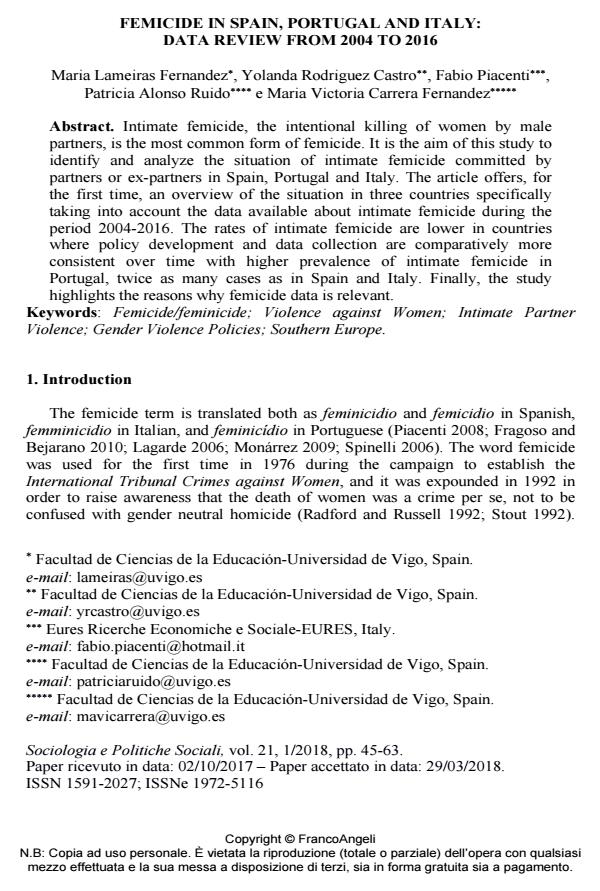Femicide in Spain, Portugal and Italy: data review from 2004 to 2016
Journal title SOCIOLOGIA E POLITICHE SOCIALI
Author/s Maria Lameiras Fernandez, Yolanda Rodriguez Castro, Fabio Piacenti, Patricia Alonso Ruido, Maria Victoria Carrera Fernandez
Publishing Year 2018 Issue 2018/1
Language English Pages 19 P. 45-63 File size 265 KB
DOI 10.3280/SP2018-001004
DOI is like a bar code for intellectual property: to have more infomation
click here
Below, you can see the article first page
If you want to buy this article in PDF format, you can do it, following the instructions to buy download credits

FrancoAngeli is member of Publishers International Linking Association, Inc (PILA), a not-for-profit association which run the CrossRef service enabling links to and from online scholarly content.
Intimate femicide, the intentional killing of women by male partners, is the most common form of femicide. It is the aim of this study to identify and analyze the situation of intimate femicide committed by partners or ex-partners in Spain, Portugal and Italy. The article offers, for the first time, an overview of the situation in three countries specifically taking into account the data available about intimate femicide during the period 2004-2016. The rates of intimate femicide are lower in countries where policy development and data collection are comparatively more consistent over time with higher prevalence of intimate femicide in Portugal, twice as many cases as in Spain and Italy. Finally, the study highlights the reasons why femicide data is relevant.
Keywords: Femicide/feminicide; Violence against Women; Intimate Partner Violence; Gender Violence Policies; Southern Europe
Maria Lameiras Fernandez, Yolanda Rodriguez Castro, Fabio Piacenti, Patricia Alonso Ruido, Maria Victoria Carrera Fernandez, Femicide in Spain, Portugal and Italy: data review from 2004 to 2016 in "SOCIOLOGIA E POLITICHE SOCIALI" 1/2018, pp 45-63, DOI: 10.3280/SP2018-001004